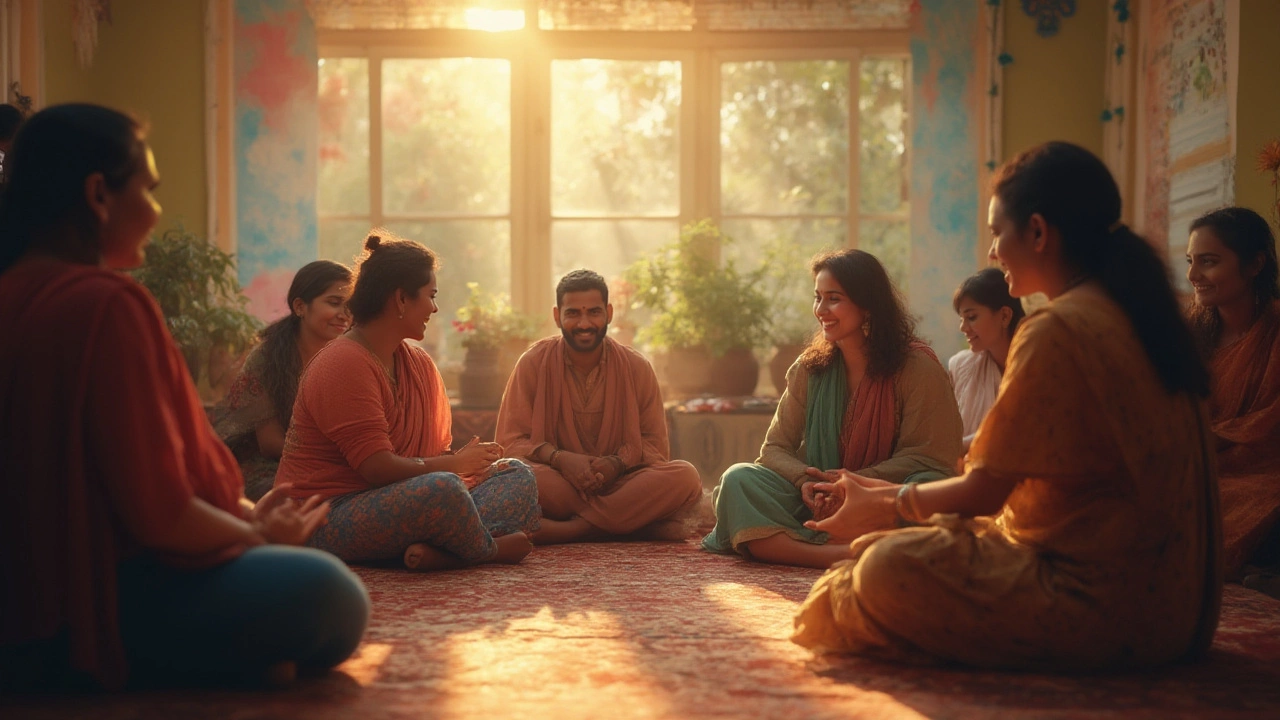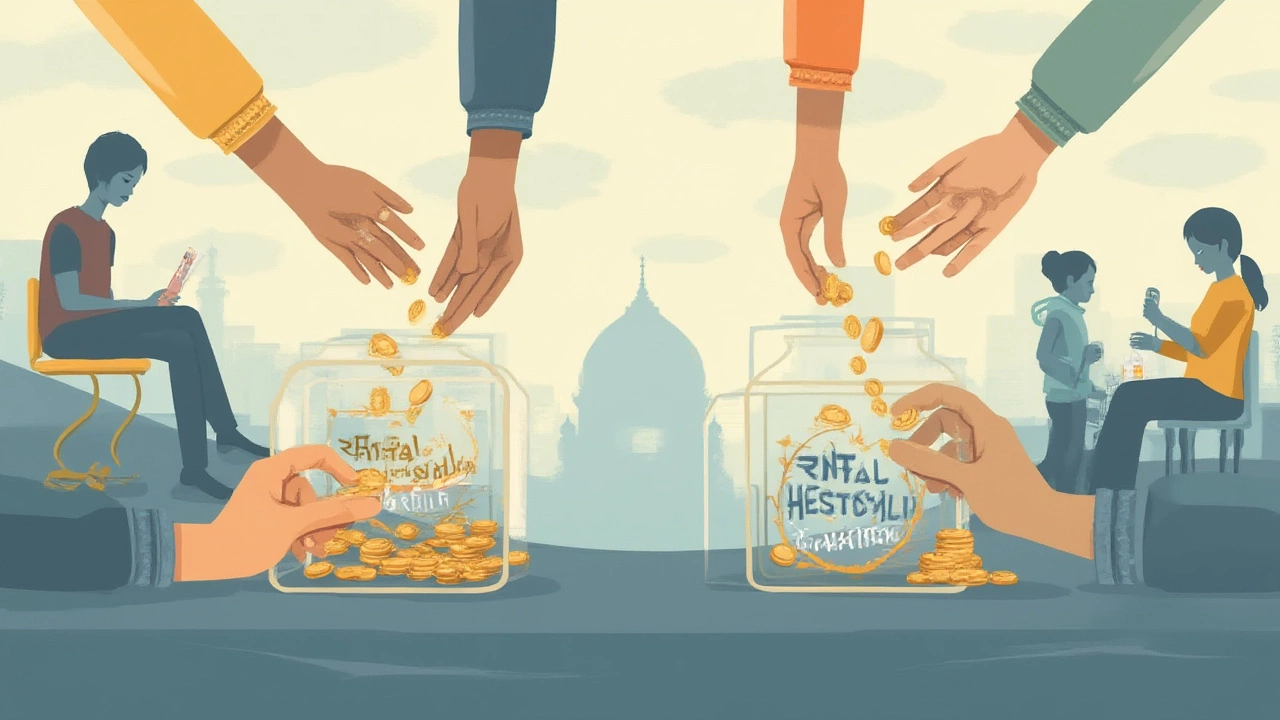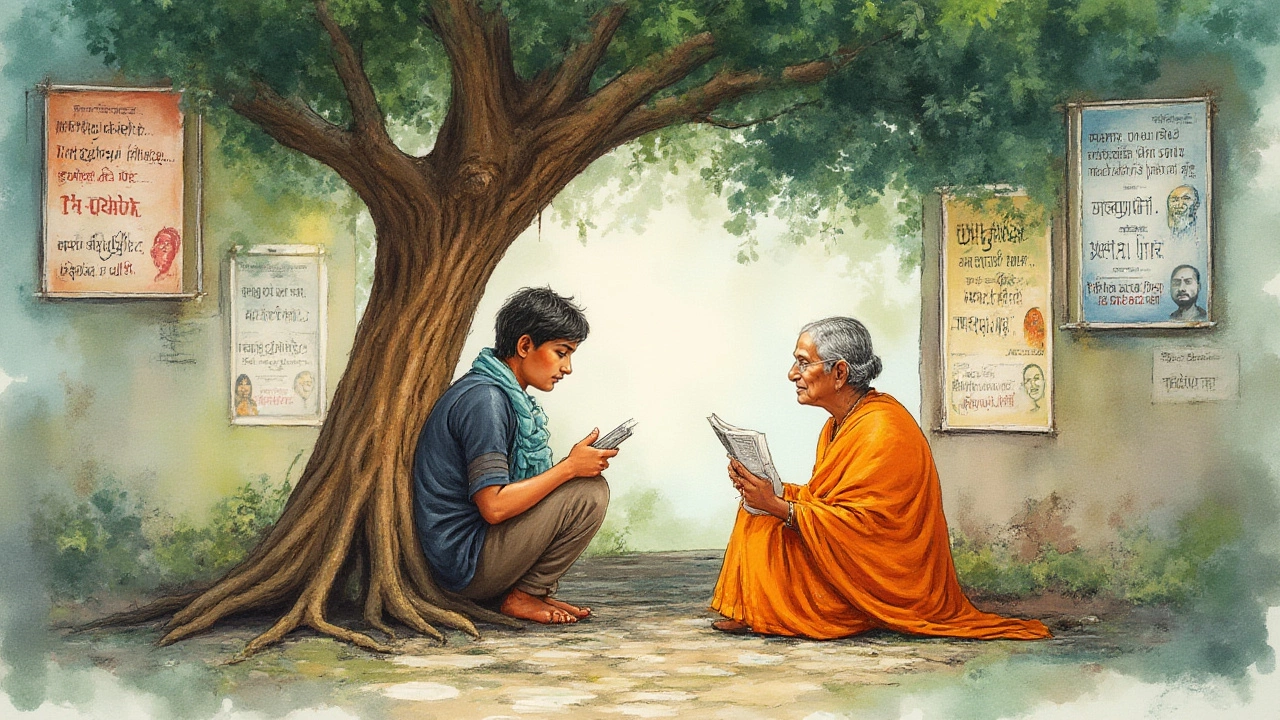Top Charities for Mental Health: Best Organizations Making a Real Impact
 Jul, 28 2025
Jul, 28 2025
Someone you know is struggling with their mental health, even if you don’t realize it. Yet, shockingly, less than half of people with mental health concerns get the help they need. Stigma, a lack of resources, and underfunded services make it harder for millions to cope. Money could change that—if it goes to the right place. But with all the charities out there, which one is actually worth your support? Picking the best mental health charity to donate to is a big decision. Let me help you cut through the clutter, so your dollars go where they really make a difference.
How Mental Health Charities Really Work
Mental health charities don’t all do the same thing. Some send therapists to schools. Others fight for rights or push for better laws. A few focus on hotlines or counseling. That means the "best" charity might depend on how you want to help. If you want your gift to send someone to therapy right now, you'll pick a different group than if you care about fixing broken mental health systems long term. A lot of people don’t realize that bigger organizations often tackle stigma at the national or global level, while smaller ones might devote every dollar to direct help in crisis.
Let’s talk about money. Donors sometimes worry that their gifts might get lost in CEO paychecks or endless paperwork. That's a fair concern. Financial transparency matters, so most respected organizations post annual reports on their website. And here’s something that doesn't get enough attention: according to the National Council for Mental Wellbeing, even the best mental health programs typically only receive 2-5% of charitable donations for health causes. That’s tiny compared to physical health charities. It's why every dollar counts more.
Charities like NAMI (National Alliance on Mental Illness) and Mental Health America (MHA) are two of the most recognized names in the U.S. NAMI is famous for supporting families, funding education, and advocating for better laws. They run programs across all 50 states, so if national reach is a priority for you, they're solid. In 2024, 84 cents out of every $1 donated to NAMI went straight to programs and services. Meanwhile, MHA focuses hard on early prevention and policy change. If you’re all about social justice and systems that work for everyone (not just those who can pay), they’re a good fit.
Some charities think outside the box. Take Crisis Text Line—they offer free, 24/7 text-based mental health support. They’re especially popular with teens and young adults who aren’t picking up the phone. Their 2024 data shows they helped more than 1.3 million people last year—and they share how many text conversations they answer per hour, right on their website. That level of transparency? Pretty rare.
Other standouts include the Trevor Project, which leads the way in supporting LGBTQ+ youth. They run the largest suicide-prevention and crisis intervention services for this community. They’re constantly updating their approach based on real-world feedback. In 2023, they saw an 18% increase in demand for their chat and phone services—a sign that need keeps growing, but also that youth are actually reaching out.
For those who want to make a difference globally, organizations like Mind (UK-based), Beyond Blue (Australia), and SANE run large-scale campaigns and personal support services. SANE has been especially creative with virtual art groups for people living with serious mental illness—just one example of how global charities are adapting to new needs and platforms.
Here’s a fact too many people miss: Not all good charities look flashy. Many small local groups have almost no marketing budget, but their work is crucial. A food pantry that offers a mental health counselor on-site or nonprofits training school teachers to spot early warning signs really change lives. If you’re thinking about going local, check their ratings on GuideStar or Charity Navigator to make sure their books are clean. If you want your gift to have a visible impact in your neighborhood, ask to see what specific programs your dollars will support.
For those who love stats, here's a quick look at funding breakdowns from three major mental health charities in 2024:
| Charity | % to Programs | Admin/Overhead | Fundraising |
|---|---|---|---|
| NAMI | 84% | 8% | 8% |
| Mental Health America | 79% | 13% | 8% |
| The Trevor Project | 85% | 7% | 8% |
Always check those percentages yourself on official websites. One tip: If you see admin and fundraising together taking up more than 25%, look for better-managed options.

The Top Mental Health Charities You Should Know About
The sad truth? No one charity can handle every mental health need. The challenge is huge. But some names keep coming up, for good reason: they’re making the biggest difference either through reach, innovation, or sheer results.
NAMI (National Alliance on Mental Illness): If you want your donation to help families, offer education classes, build support groups, and fight stigma, NAMI’s got all angles covered. They support research, lobby for better access, and even offer free peer-led programs. Their annual NAMIWalks events alone raised nearly $14 million last year, going straight into local and national efforts. People love how transparent they are, and how quick you can see the real outcomes from your donation. If advocacy and education matter to you, they’re tough to beat.
The Trevor Project: Kids and young people in the LGBTQ+ community are four times more likely to attempt suicide. That’s gutting. The Trevor Project runs 24/7 phone, text, and chat hotlines specifically for this community. They also train teachers and counselors in schools, run research studies, and fight for better laws. During 2024, they opened new text-based help lines in five languages, directly addressing the needs of immigrant families. With each $25 gift, you literally help fund one more crisis support session. For those who want their dollars to save young lives, the impact is direct.
Crisis Text Line: The modern answer to phone hotlines, they offer fast support via SMS. Their reach has skyrocketed because teens feel more comfortable texting than talking. Armed with real-time analytics, they’ve saved lives during peaks in crises—like after high-profile celebrity deaths. In 2024, the most common keywords from people reaching out were "anxiety," "relationship stress," and "family problems." They openly share anonymized transcripts and data on how their service changes lives. Privacy and transparency are at the heart of their mission.
Mental Health America (MHA): With 200 affiliates across the US, MHA is laser-focused on early intervention. They run massive mental health screening services online—over 5 million screens were completed in 2023 alone. Their research guides major healthcare systems in improving support, plus they influence government funding and insurance rules. If policy or science-based solutions are important to you, you’ll see your donation at work through legislative wins and big data reports.
StrongMinds: For those with a global lens, StrongMinds focuses on depression in women and girls living in Africa. Their therapy model is simple but powerful: small, weekly group sessions led by lay counselors. Over the last five years, they’ve treated over 210,000 women and girls. Their results? Around 80% report improvement in symptoms or full recovery. Your donation doesn’t just cover a single counseling session—it helps run group therapy for people who often have nowhere else to turn.
Mind: Trained staff and community groups run advocacy, helplines, and support groups across the UK. Mind pushes for fair treatment, helps companies create mental-health-friendly workplaces, and supports young people. In 2024, they grew their mental health in schools program by 35%, reaching more than 95,000 students. They make their impact numbers public, so you always know what’s happening with your money.
You might notice these top choices have something in common: clear missions, public impact numbers, and real stories behind every statistic. If you’re looking at a charity and can’t find those details, move on. Your support deserves more than hope—it deserves results you can actually see and trust.
Of course, your values matter, too. Some charities center on suicide prevention, others work on specific illnesses like schizophrenia, PTSD, or eating disorders. There are groups targeting veterans (like Give an Hour or Wounded Warrior Project), artists (The Actors Fund), and even athletes. It's always okay to pick something that has touched your own life personally.
When choosing, here's a quick list to keep you from getting burned:
- Check for 501(c)(3) nonprofit status (in the US) or official charity registration elsewhere
- Review independent charity ratings (Charity Navigator, GuideStar, BBB Wise Giving Alliance)
- See if they post annual impact reports and detailed breakdowns of spending
- Look for real outcomes: people served, programs launched, or laws changed
- Find out if your donation can be designated (“use where needed most” vs. specific program funding)
Big or small, your choice matters. If you want your employer to match your gift, pick one from their approved list for double (or triple) the impact. Want to get hands-on? Many of the best charities also run peer support networks or advocacy groups you can join yourself—no need to donate to make a difference.

How to Get the Most Out of Your Donation
Let’s get real: mental health funding is always behind. Small gifts add up to big changes, especially if you’re clever about how you give. There are smart ways to boost your impact—so your money doesn’t just disappear into the void.
First thing? Spread out your gift. Monthly giving is the secret sauce for many charities. When you commit even $10 a month, it’s easier for them to plan programs, pay counselors, and hire staff. One-off donations are awesome, but recurring ones make a bigger dent. For example, NAMI and MHA both say that their monthly donors fund over 20% of crisis response and education efforts each year.
Let’s talk workplace giving. Lots of companies will match what you donate. Some big firms (like Microsoft, Starbucks, and Google) double or even triple the dollars you give to a charity on their list. You can check your eligibility online—just ask HR or go through platforms like Benevity. Don’t leave that free money on the table!
Fundraisers are another trick. People underestimate how much impact a birthday Facebook or Instagram fundraiser can have. In 2022, the Trevor Project took in $17 million from grassroots social media fundraisers alone. Asking friends for $5 each adds up faster than you think. If you want to turn a small act into something bigger, try launching a campaign tied to an event: World Mental Health Day (October 10), Suicide Prevention Month (September), or even your own personal day of meaning.
Before donating, go beyond gut feeling. Do a little homework to make sure donations aren’t eaten up by admin costs or shady spending. Charity Navigator is a trusted place to start—they grade everything, from transparency to how much goes to real programs. For the gold standard, top-rated mental health charities have at least 75% of all money going to programs (not overhead). The best ones push above 80%.
Cryptocurrency is changing the giving game. Tech-savvy donors are turning Bitcoin and Ethereum into a real force for good, as charities like the American Foundation for Suicide Prevention and the Trevor Project now accept crypto gifts directly. These donations can sometimes be more tax-advantageous, making your impact bigger in the end.
For families, there’s a tip not enough people use: get kids and teens involved in picking the charity. Let them research, vote, and share why they picked NAMI or Crisis Text Line. Suddenly your donation turns into a tool for teaching empathy and awareness.
Don’t have much to spare? Your voice can be just as valuable. Volunteering, writing to politicians about funding gaps, or sharing accurate mental health facts on social media all move the needle—even if your budget can’t. NAMI, Trevor Project, and local chapters of MHA all run online volunteer shifts and advocacy pushes you can join from anywhere.
And keep receipts. Gifts to registered nonprofits are usually tax-deductible. Use those Giving Statements come April. It’s a small way to get a little back for giving forward.
One last thing: the mental health world loves stories. If you feel comfortable, share why you gave and what you hope it’ll change. Personal stories in a donation message or on social media convince more people to care, making every dollar work harder. Sometimes, telling your story helps someone realize they aren’t alone—and that’s priceless.
So what’s the best charity for mental health? The honest answer is, it’s the one whose mission clicks with yours, that’s proven they get real results, and run their books right. Whether you go with an international name or something local, what matters is getting off the fence and making the move. The perfect choice is better than perfect research. Your action makes the difference.